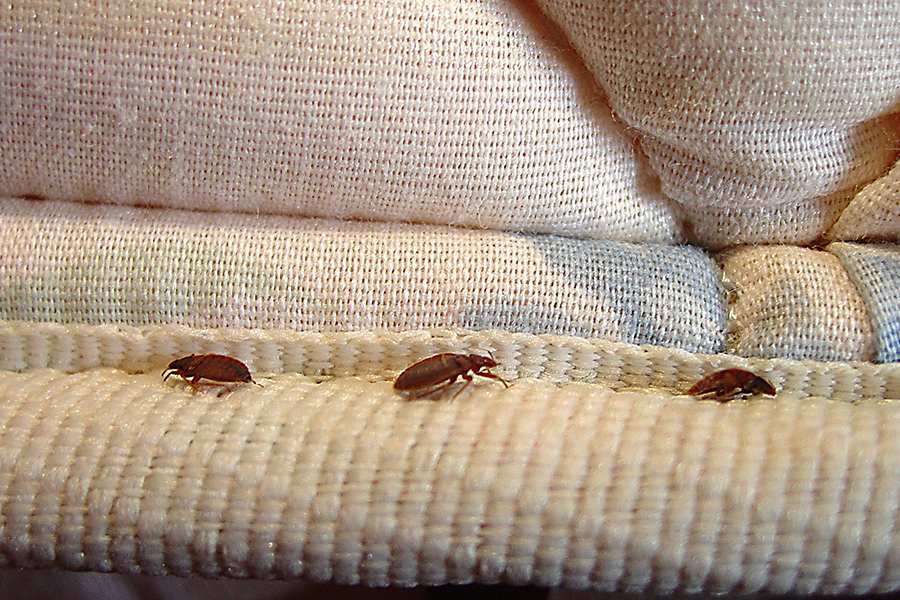Sleep tight! Researchers sequence bed bug genome.
Loading...
The ambition of scientists to map the genetic code of as many living organisms as possible has landed them on one organism that many people wish would stop living: the bed bug.
Alas, the pesky critter has excelled at living and spreading, having evolved over the last couple of decades to resist the chemicals most widely used to kill it.
In two papers published Tuesday in the journal Nature Communications, independent teams of researchers that have studied the genome of the common bed bug, Cimex lectularius, reported insights that help explain why the insect is enjoying a resurgence and could possibly help eradicate the bloodthirsty pest once and for all.
One notable finding by researchers who looked at DNA and RNA in bed bugs, led by the American Museum of Natural History and Weill Cornell Medicine, is that the gene that makes the bugs resistant to common insecticides is activated after they enjoy their first blood meals, which could mean that chemical killers might be most effective if used during the early stage of the bug’s life.
"In addition to the DNA, you want to get the RNA, or the expressed genes, and you want that not just from a single bedbug, but from both males and females at each part of the life cycle” Mark Siddall, a paper author and zoologist at the natural history museum, said in an announcement.
“Then you can really start asking questions about how certain genes relate to blood-feeding, insecticide resistance, and other vital functions," said Dr. Siddall.
The research team extracted the DNA and RNA from different life stages of both living and dead bed bugs, including bugs from 1,400 locations around New York City, to try to better understand why the insect, which for thousands of years has sustained itself by feeding on human blood at night, has rebounded on every continent except Antarctica after being nearly eradicated by DDT after World War II.
One reason is that the overuse of insecticides meant to kill them helped bed bugs over time to develop a resistance to the chemicals, allowing the pests to rebound with a vengeance in the last two decades, easily spreading through increased global travel. Bed bugs thrive in beds, couches, and around electrical outlets and can cause hundreds of bites a night. They're not known to transmit diseases.
"Today, a very high percentage of bed bugs have genetic mutations that make them resistant to the insecticides that were commonly used to battle these urban pests. This makes the control of bed bugs extremely labor intensive," said Louis Sorkin, a paper author and a scientist at the museum.
The scientists behind both studies found that hundreds of species of bacteria in the bed bug’s microbiome seem to be key to its growth and survival, indicating that maybe targeting these bacteria with antibiotics could help curtail bed bug infestations.
The research team behind the second paper published Tuesday, led by the University of Cincinnati and Virginia Polytechnic Institute, found in a few cases that some genes from the bacteria found in bed bugs over time have transferred to the insect’s own chromosomes, potentially helping it adapt to something harmful in its environment.
“More research will show what is the significance of those genes and what they benefit the bed bugs for,” Ameya Gondhalekar, a Purdue University entomologist who contributed to the second paper, told The Christian Science Monitor.
For now, it is unlikely that bed bugs can be eradicated, says Christopher Mason, associate professor of computational genomics at Weill Cornell Medicine and a senior author, to the Monitor.
“I want to say no,” Dr. Mason says. “But it’s not impossible.”
He suggests focusing on developing buildings that can detect the DNA of these pests.
“Not more insecticide, but maybe better surveillance of where they are and how they’re moving,” he suggests.






